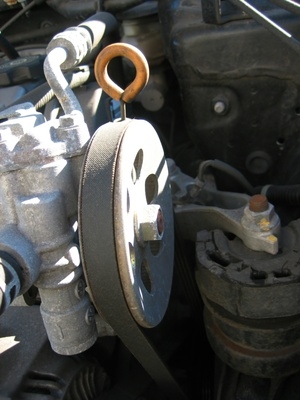
Some manufacturers equip certain vehicles with timing chains to synchronize the valves and pistons in the engines, while other vehicles come with timing belts. Timing belts are able to stretch over the longer distances required in many newer overhead cam engines, according to NPR's Car Talk car experts. Timing chains have their own advantages over belts.
Timing chains last longer than timing belts. Depending on the age of the vehicle, timing belts need to be replaced about every 60,000 to 100,000 miles you put on the engine. Since timing belts are made of rubber with reinforcing cords embedded inside, the material does not withstand the heat and other wear as long as chains. Timing chains often can last until you put 150,000 miles on the engine.
Some engines that use timing belts are interference engines. If the timing belt for an interference engine is not replaced soon enough and the belt breaks, the out-of-control engine parts, such as the pistons and valves, can collide. Such collisions result in engine damage, which costs more to fix than a belt replacement. Not replacing a timing belt on time can cause severe engine damage.
As timing chains reach the end of their lives, they may break like belts. Chains also can stretch out, unlike belts, which will cause the valves to open and close at the improper times. A vehicle with a stretched out timing chain will accelerate poorly, experience a loss of engine power and the engine will run louder than normal. If the chain does break before you replace it, the car will stop running but no engine damage will result.